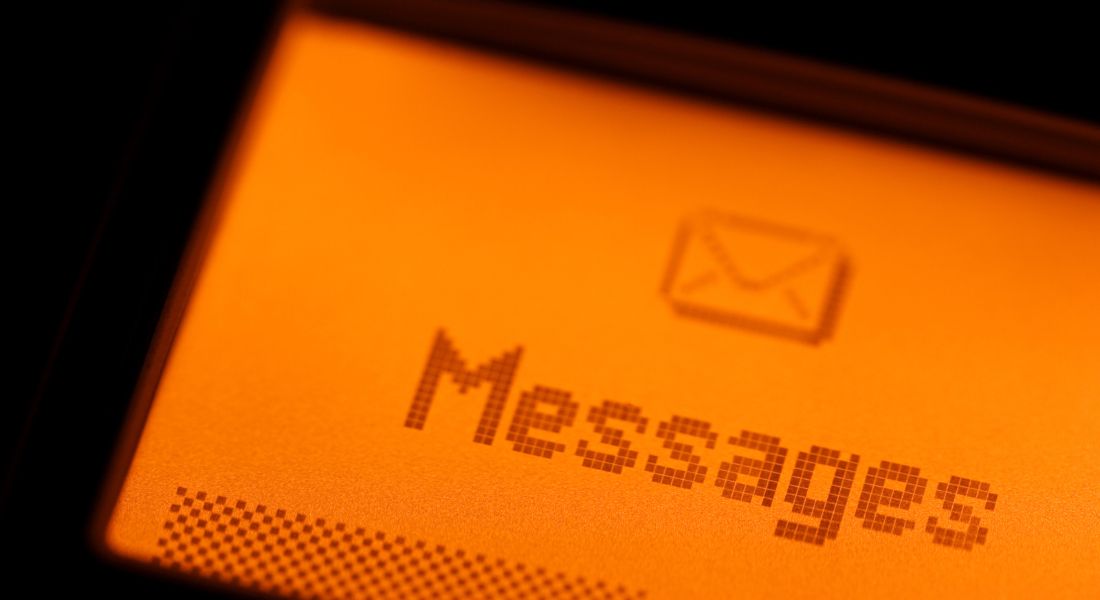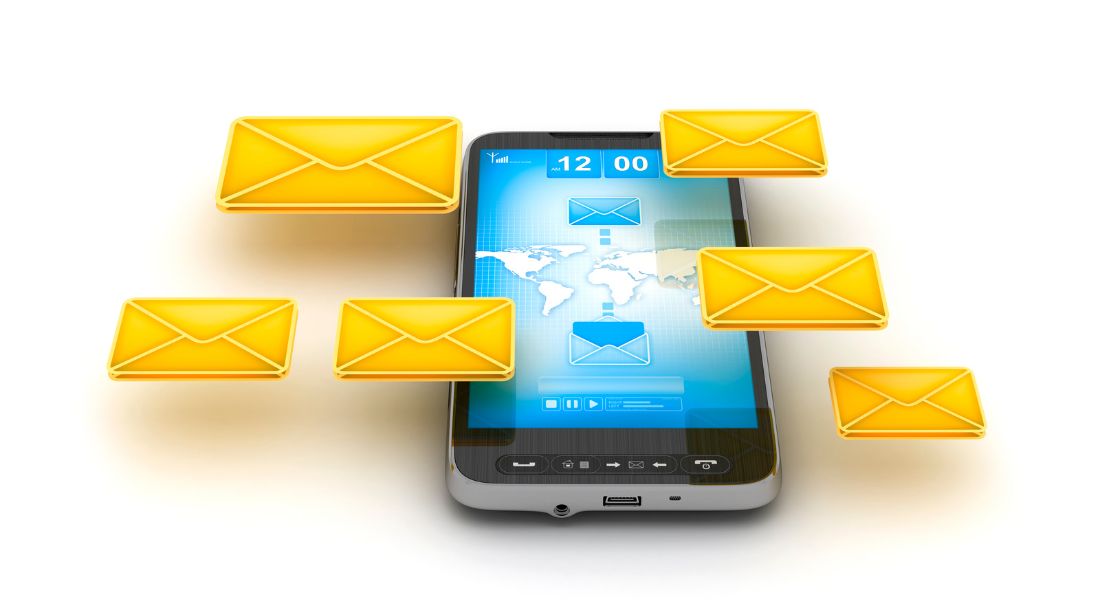Crafting effective messages for SMS isn’t as straightforward as it may seem. Whether you’re writing text messages for marketing purposes or updating customers on their customer service inquiries, there are certain considerations you must keep in mind in order to ensure the copy you write is engaging and effective.
In this blog post, we’ll be providing you with valuable tips and advice on how to write engaging SMS copy for maximum impact. We’ll share insight on the importance of personalization and the dos and don’ts of writing your text messages. Plus, we’ll show you some of the tricks to help ensure your copy achieves the desired results. With these tips in your arsenal, you’ll be sending out a copy that catches your audience’s attention quickly and compels them to take action. Let’s dive in!
Quick Recap
Writing effective SMS copy requires understanding the attention span of the target audience and utilising techniques that are concise, engaging, and concise. Utilise a call-to-action, choose words carefully, stay focused, and consider brevity.
Post Contents
ToggleUnderstand Your Audience
The success of any SMS message relies heavily on its acceptability for the intended audience, making it key to understand your target consumer before crafting an engaging copy. A great starting point would be to create personas for the different segments that make up your target audience, and determine their preferences. This could be anything from their age, location, profession, etc., all the way to their motivations and needs.
By getting to know who you are targeting, you will have a better understanding of how to personalise and tailor content effectively to speak directly to them. Consider specific language that will resonate with your audience; depending on the segment, this could be more casual or formal in nature. Additionally consider their average length of attention per text message; does your target audience prefer short and direct statements or more complex messages?
In order to maximise your engagement with each of these defined personas, it is essential to understand precisely who you are communicating with. Once you’ve gathered enough data and facts about your individual segments, you then have ample material to customise your copywriting as witnessed by your customers and create successful results. Transiting now to the next step in the process of crafting effective messages – getting to know them even better by diving deeper into their needs and motivations – lays a strong basis for increased engagement through SMS copywriting.
- According to a survey of over 500 marketers, 80% use SMS as a marketing channel.
- Research shows that 84% of smartphone users prefer businesses texting them as opposed to other channels for promotions and offers.
- DMA research found that text messages have an average open rate of 98%, making it the most opened communication channel.
Get to Know Them
By understanding your audience, you can potentially start to narrow down the best ways to connect with them. Knowing their demographic, values and interests is key for crafting unique messages that will truly engage them. Once you have figured out who your audience is, it’s important to get to know them on a deeper level. To do this, a good approach is to collect data via surveys or analytics tools. This way, you can get a better idea of what motivates them and why they are investing their time into reading and responding to your messaging. Additionally, studying consumer behaviour will help inform you about what devices and applications people are using the most often when engaging with similar content.
Another important step is to create personas based on this data. Personas are fictional characters which represent different customer types typically in relation to a company’s product or service. The more detailed these personas are, the easier it will be to design highly personalised SMS messages that speak directly to each type of customer.
Once you have a strong grasp on who your target audience is and how best to reach out to them, the next step is ensuring that your content itself is clear and concise. With only so much space and time available, it’s critical that you make every word count with SMS copywriting because it has the potential to turn leads into customers.
Highlights
To effectively connect with your target audience, you need to understand their demographic, values, and interests. Collecting data through surveys and analytics can help you determine what motivates them. Additionally, studying consumer behaviour will inform the technology they use to engage with content. From there, it’s important to create personas that can be used to craft personalised messages for each customer type. Finally, when writing your messages, ensure they are clear and concise as time and space is limited.

Make Your Content Clear and Concise
Once you know who your audience is, it’s time to get into the content itself. Brevity is key when composing a text message: if it takes too long to read a text, you’ll lose the attention of your customers in an instant. Keeping messages concise and clear will ensure that your messages will be responded to. That being said, it’s important not to cut corners with your message.
It can be tempting to use shorthand or abbreviations, but this can come off as too informal. While they may save characters and space, abbreviations can obscure the meaning of your message and make it more difficult for customers to understand. Stick to a professional tone and utilise language that is simple and easy to understand. Visual aids such as emojis or gifs can help communicate ideas quickly while keeping the message interesting and engaging.
Using plain language in combination with visuals can create compelling messages that are both clear and concise – this enables readers to comprehend the information quickly and allows them to respond appropriately if needed.
Now that your content is created and ready to send out, you need to focus on ensuring that the value of the message is communicated effectively in order for customers to interact with it positively. Receivers should be taken on a journey, from understanding what your message is about, knowing what action to take next, and finally why taking action matters in the first place. This process all starts with getting focused on specific points you want to make in order for customers to engage with your content.
Focus on the Points You Want to Make
Now that you have established the importance of clarity and conciseness in your messages, it is essential to also focus on the points you wish to make. This means that your SMS copy must be organised in a clear way so readers can quickly and efficiently understand your message. Structure your messages using headings, lists and other helpful designs for easier accessibility. Additionally, try to keep any key points at the top of the message to grab attention immediately. Of course, all of this should still adhere to the principle of brevity; make sure no unnecessary words are included and ensure all writing is concise.
It may be tempting to include persuasive elements in your messaging but caution must be taken when doing so – it must be done subtly. Too pushy of an approach may turn potential customers away; they must be able to get what you are selling without feeling pressured into it. Therefore, employ language, structure and themes with a subtlety that hints towards a desired goal in the customer’s mind while offering them more information in a pure form, completely unencumbered by any aggressive attitude.
Once you have done this successfully, it is important not just to focus on their thoughts but also their emotions too – by appealing to them emotionally as well as logically you can improve the interaction between yourself and the customer/reader considerably. We will now move onto how one should go about doing this – transitioning from our current topic into the following section.

Appeal to the Emotions of Your Readers
When writing an SMS copy, it is important to appeal to the emotions of your readers. Whereas the previous section discussed focusing on the points you want to make, this section will go into depth about what kind of language to consider using when tapping into emotion-driven responses.
If applicable, consider including persuasive language with logical arguments that people can relate to. For example, if you are trying to get the reader to purchase a product or download an app, begin your message with simple facts about why it may be advantageous for them and use authoritative language that speaks volumes without being overly obvious in what you’re implying. Furthermore, when crafting your message make sure that you include content that speaks directly to the desires and needs of your desired audience. By doing so, they will feel like you understand their situation fully and be more likely to take action and engage with your copy.
In addition to incorporating persuasive and emotional language into your text messages, ensure you follow up with a call-to-action prompt that motivates the reader towards taking action. If your messages evoke feelings of excitement, fear or love in your readers then they may be more inclined to act out on whatever it is you have asked them to do. Depending on the situation, consider using phrases such as ‘Don’t miss out on this opportunity’ or ‘Act fast!’ in order to emphasise urgency while still remaining subtle.
When appealing to the emotions of readers in your SMS copy, keep in mind not only what feelings you want the reader to experience but also how best to effectively convey those messages towards achieving a desired outcome. As demonstrated by the examples above as well as other strategies, there are several effective techniques you can use when considering how to write an engaging SMS copy. Moving forward, our attention will now shift from appealing to readers’ emotions towards utilising personal and unique wording in order to create even more captivating SMS content.
Use Personal and Unique Wording
When crafting effective SMS messages, you can dramatically increase the engagement of your readers by using personal and unique wording. This will allow your message to stand out and be memorable to readers. One way to achieve this is by using personal pronouns such as “you” and “I”. Connecting with your readers on an individual level helps to create a more personal experience which resonates with them more effectively.
You should also aim to vary the way you phrase your copy. By employing creative language, you can grab the attention of your audience and make it easier for them to understand what is being communicated. Try to avoid sticking too much to traditional phrasing or going too far by making the copy too complicated. Every massage should have its own objective and style that reflects that goal.
Overall, using personal and unique wording when crafting effective SMS messages is a powerful tool in engaging readers. By connecting with audiences on an individual level and utilising creative language, you can amplify the impact of every message sent out. That said, it is important to strike a balance between providing sufficient information without overcomplicating it or boring the reader.
At this point, you have a foundational understanding of how emotions, personalization, and uniqueness can increase engagement with SMS messages. Now, let’s move on to explore how content marketing strategies can further boost the effectiveness of these messages.

Increase the Effectiveness of Your Messaging with Content Marketing Strategies
When writing an engaging SMS copy, it is crucial to understand that content marketing strategies can increase the effectiveness of your messaging. Content marketing is a process of creating consistent and relevant content for the people who are interested in particular topics that pertain to the message you are writing. Utilising content marketing will allow for more creative forms of communication which can be even more effective than using personal and unique wording with basic keywords. This is because content marketing allows you to explore different perspectives and presents information in new ways using various types of media, such as videos, images, podcasts, and so on.
Content marketing can also help to capture people’s attention when they are scrolling through their phones. This is because people love to watch and engage with visuals, listen to audio clips, or read lengthy articles – as long as it relates to their interests. For example, if someone is looking for a certain type of product or service, chances are they will pay attention if your SMS copy provides content related to what they need. Additionally, providing useful information around topics related to your message will intrigue people – making them more likely to read further and in turn prompting them to take action.
Overall, there are various ways in which content marketing strategies can boost the effectiveness of your messaging. It is an important strategy to consider when crafting an engaging SMS copy – one that will certainly help you influence and motivate your readers. Now that we have discussed how powerful content marketing strategies are, let’s move on to talk about how promoting benefits over features can make all the difference in getting people interested in what you have to offer – all while being subtle about it.
Promote Benefits Over Features
Promoting benefits over features is a key strategy to creating engaging SMS copy. After increasing the effectiveness of your messaging with content marketing strategies, you should focus on how you can persuade potential customers about the advantages of purchasing or using your product or service. While highlighting features can be a helpful way to provide an overview of what your product or service offers, emphasising benefits will help increase conversions and convince potential customers why they should buy.
The primary argument in support of focusing on delivering benefits is that it simplifies the persuasive process. By appealing to customer needs and desires, businesses can convince prospects that they are better off with their product than their competitors’ offerings. In addition, instead of quickly forgetting features after viewing them, consumers tend to remember the advantages associated with a particular product more clearly, making it easier for them to make purchase decisions. Of course, this is especially true when marketers use compelling language and don’t settle with generic descriptions that lack any sort of emotion.
Furthermore, research has shown that more often than not, customers choose products that are beneficial to their needs rather than those praised solely for their features. Focusing on what sets your product apart allows you to move past simply stating facts and towards sparking an emotional connection with the customer. Customers will be more likely to think about how a specific feature can benefit them rather than just giving them an information overload about specifications. For example, if you are selling headphones then describing its bass power or low latency won’t necessarily influence a person like stressing how they will feel when using those headphones.
On the other hand, some may argue that features should still play a major role in the promotional process as they provide valuable information and an understanding of what sets certain products apart from one another. It’s true that providing accurate facts can inform prospects about a product’s superiority over its competitors without letting emotions get involved in the conversation. However, this can lead to potential customers feeling overwhelmed and confused before making a purchase decision as it only focuses on the technical specs with no clear indication of why they should invest in your brand.
Although there is room for debate on which type of message works best for different types of campaigns, it cannot be disputed that emphasising benefits over features will generally yield higher conversion rates and better results overall. At the end of the day, customers want answers to their problems and not just facts about products, so focusing on delivering solutions is crucial for any business looking to create SMS copy that resonates effectively with them.

Common Questions and Their Answers
What types of content should I include in my promotional SMS text messages?
When crafting promotional SMS messages, it’s important to think about the types of content that will be most effective in engaging your target audience. Consider including content related to:
- Special offers and discounts: Give your customers a reason to take action by offering exclusive savings or promotions.
- Relevant information: Share content that is relevant to your target market and offers value such as helpful tips and advice.
- A strong call to action: Invite your customers to engage with you by driving them to take specific actions such as signing up for a newsletter or visiting your website.
- Personalization: Personalise your messages to increase engagement by addressing your customers directly using their names or other details.
- Social media integration: Integrate social media links into your messages to drive users to connect with your business on other platforms.
What are the best practices for crafting a promotional SMS?
The best practises for crafting a promotional SMS depend on the message you are trying to convey. Generally, you should aim to be succinct and direct. Keep in mind that the average length of a text message is between 90 and 160 characters, so it’s important to get your point across quickly and effectively.
First, make sure your message stands out. Consider using emojis, bold words, or other visuals to capture the reader’s attention. Second, keep it focused and simple by having one clear call-to-action (CTA). Third, make sure your tone is appropriate for the audience; avoid jargon or overly formal language. Finally, remind recipients why they should take action; think about giving incentives such as discounts or time-limited offers.
By following these practices, you can create compelling promotional SMS messages that encourage click-throughs and conversions.
What are the key elements of effective SMS copywriting?
The key elements of effective SMS copywriting include:
1. Clarity: Messages should be concise, direct and easy to understand. When pitching an idea or sending a promotional message, make sure that the language used is simple and easy to comprehend.
2. Mobile-Friendly Formatting: Text messages should be kept below 160 characters. This ensures that recipients will receive the full message without having to scroll through long paragraphs or taking time out of their day to read it.
3. Personalization: Make sure to include personal references that apply specifically to the recipient, such as their name, interests, or any other relevant pieces of information that can grab their attention and make them more likely to engage with your message.
4. Call-To-Action: End each message with a clear and compelling call-to-action. Whether it’s “ Click Here”or “Visit Our Website”, this will give the reader an incentive to take action rather than just read or delete the text without further thought.
5. Timing: The timing of when you send out your messages can help determine how successful they are. Consider when your target audience may have time to read your SMS and adjust accordingly for maximum engagement results.





